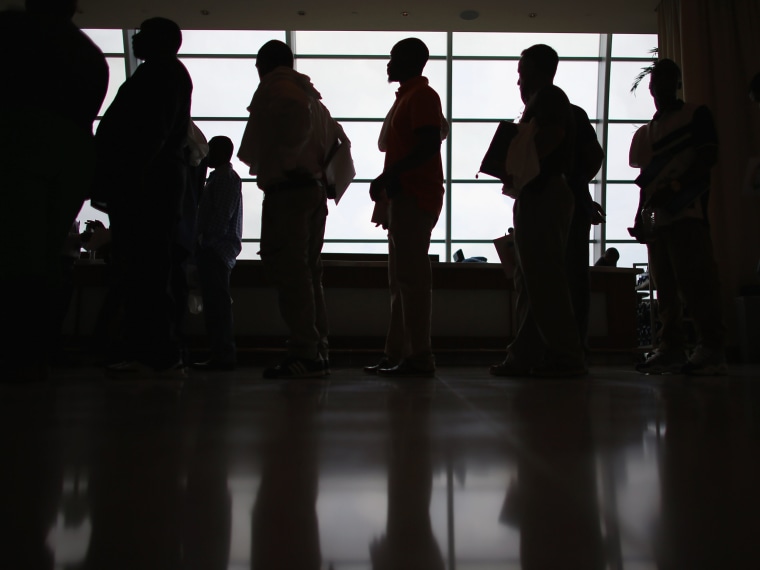It was the presidential Twitter feed of jobs reports: Confounding, at times contradictory, and leaving experts divided on its implications.
At 4.3 percent, the official unemployment rate for May is the lowest it has been since May 2001. But the 138,000 jobs created fell well short of analysts’ projection of 185,000, and even further from ADP’s private-sector estimate of 253,000, while job gains from the previous two months were revised downward. The so-called “real” unemployment rate dropped to 8.4 percent, the lowest since November 2007, but the labor force participation and employment-population ratios both fell.
“It does seem like hiring at the margin is slowing a little bit. It’s not distressing as long as you keep looking at it as where are we in the cycle,” said Sameer Samana, a global quantitative strategist at the Wells Fargo Investment Institute.
Other labor market experts suggested that the downward revisions of earlier job gains could weigh on the hopes for economic growth. “That was an aggressive haircut,” said Mark Hamrick, senior economic analyst for Bankrate.com, saying that the Trump administration’s early rush to claim credit for job gains was premature. “We’ve been humbled by history over the course of this eight-year recovery many times.”
“Usually a drop in the unemployment rate is a good thing, but this was for the wrong reasons,” said Dan North, chief economist at Euler Hermes North America. “I think that’s one of the reason why wages are still being held down.” Sluggish wage growth has been a thorn in the side of workers since the recovery, and May’s annualized 2.5 percent rate was more of the same, short of the 3 percent to 4 percent that most economists consider indicative of a truly robust economy.
“We’re not seeing much wage acceleration overall. That weak pay growth is the same pattern we see in Glassdoor’s local pay reports,” Andrew Chamberlain, chief economist at Glassdoor.com, told NBC News.
Some economists suggested this these figures represent a new normal, an as-good-as-it-gets situation that could bedevil the Trump administration’s reliance on a sustained 3 percent GDP growth to offset massive tax cuts. “The real question is if we were to get there, would it come with inflation, a more aggressive Fed? It’s not so much whether we can get to 3 percent growth; the question is, is it efficient and necessary 3 percent growth,” Samana said.
Related: Unemployment Rate Falls to 4.3 Percent
Characteristic with the overall theme of the post-recession labor market, May’s report found that more people got jobs in healthcare, professional services and food service.
“Those are the same sectors that have been adding jobs for some times,” Chamberlain said.
The retail sector’s losses slowed, but still continued to shed jobs in May. “It’s the retail apocalypse, given all the store closings,” North said. “It’s all pretty grim.”
Chamberlain said the numbers were more likely a reflection of a shift in the way Americans shop. “My view is that retail overall is in good shape. The big box commodity retailers are in trouble. The retailers that are doing well are smaller, boutique-based retailers,” he said.
Economists also noted that employment in manufacturing fell incrementally, despite President Donald Trump’s avowed support. “The policy statement supporting manufacturing and the policy actions supporting manufacturing are a drop of water in the ocean of forces that are shrinking manufacturing in the United States,” Chamberlain told NBC News.
“For all the talk about manufacturing, we're down to less than 10 percent of the economy now,” North said. “Most indicators in manufacturing have been turning up recently but there are hints it’s stumbled... The durable goods orders, in particular, was a little bit of a setback.”
Samana said this slowdown merits keeping an eye on in the coming months, since it could indicate early signs of weakness. “It’s not as big a part of the economy anymore... but sometimes manufacturing can lead the economy,” he said. “If they’re slowing down on hiring, you want to be cognizant and know why.”
